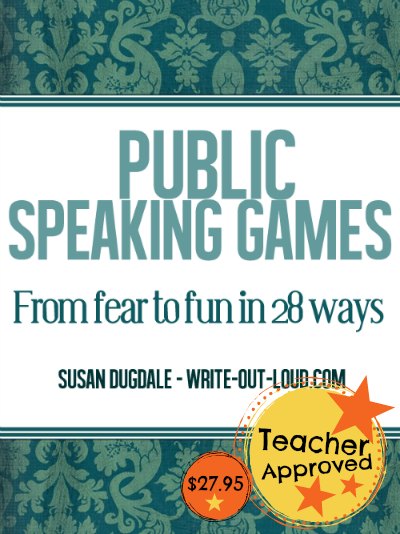How To Use Gestures Effectively?
To use gestures effectively, practice clear and intentional movements that enhance communication. Using gestures effectively can greatly improve communication and help convey your message more effectively.
Gestures can emphasize and add depth to your words, making your message clearer to your audience. However, it is important to use gestures purposefully and with intention. Practice being aware of your body language and use gestures that align with your message and tone.
Additionally, consider the cultural context to ensure your gestures are appropriate and understood. By mastering the art of effective gestures, you can enhance your communication skills and effectively engage with others.
Benefits Of Using Gestures
Using gestures effectively can significantly enhance communication and engagement in various situations. By understanding the benefits of utilizing gestures, individuals can improve their overall communication skills and establish stronger connections with others.
Improving Communication
Gestures can help to convey emotions, thoughts, and concepts more effectively than words alone. They bridge language barriers and enhance understanding between individuals. Using the right gestures in communication can lead to clearer and more impactful exchanges, enabling better comprehension and reducing the likelihood of misunderstandings.
Enhancing Engagement
Incorporating gestures into communication enhances engagement by adding a dynamic element to interactions. Gestures capture attention and maintain listener interest by providing visual cues that complement verbal communication. This increases focus, improves information retention, and promotes active participation in the conversation.
Types Of Gestures
Gestures are powerful tools for effective communication, helping us convey meanings and emotions without verbal language. Understanding the different types of gestures can enhance our ability to interact, communicate, and connect with others on a deeper level.
Emblems
Emblems are gestures that have explicit, universally understood meanings in a particular culture or context. These gestures can substitute verbal communication entirely. Examples of emblems include the thumbs-up sign, peace sign, and head nod for confirmation.
Illustrators
Illustrators are gestures that accompany verbal communication and help to illustrate or emphasize certain words or ideas. They enhance our message and make it more engaging and memorable. For instance, pointing finger while describing something or using hand movements to demonstrate the size of an object.
Affect Displays
Affect displays are gestures that convey emotions or feelings. They are often related to facial expressions, body language, or hand movements. A smile when we feel happy, a frown when we are sad, or clapping hands when we are excited are all examples of affect displays.
Regulators
Regulators are gestures that help regulate, control, or manage the flow of conversation. They are used to signal when someone should start or stop speaking, take turns, or pay attention. Examples of regulators include raising a hand to indicate a desire to speak or nodding to encourage the speaker to continue.
Adaptors
Adaptors are gestures that we use to satisfy personal needs or to cope with discomfort or anxiety. They are often done without conscious awareness and can help us relieve stress. Examples of adaptors include rubbing our hands together when we feel cold or playing with our hair when we feel nervous.
By understanding and utilizing these different types of gestures, we can enhance our nonverbal communication skills, foster better connections with others, and become more effective communicators overall.
Techniques For Effective Gesture Use
Gestures are an essential part of nonverbal communication. When used effectively, they can enhance our message, engage the audience, and make our presentation memorable. In this section, we will discuss three techniques that can help you use gestures effectively: mirroring the audience, using purposeful gestures, and maintaining eye contact.
Mirror The Audience
One technique for effective gesture use is to mirror the audience. By observing the body language and gestures of your audience, you can adapt your own gestures to establish a connection with them. Mirroring their gestures, such as hand movements or facial expressions, can create a sense of familiarity and rapport. This technique not only helps to build trust but also makes your audience feel more comfortable and engaged.
Use Purposeful Gestures
Another technique for effective gesture use is to use purposeful gestures. Your gestures should align with your message and emphasize key points. Avoid random or excessive movements that can distract the audience from your main message. Instead, use gestures that are deliberate and intentional. For example, if you want to highlight a specific idea, you can use an open-palm gesture or point in the direction of the main concept. Purposeful gestures not only capture attention but also enhance the understanding and retention of your message.
Maintain Eye Contact
Maintaining eye contact is a crucial aspect of effective gesture use. By making eye contact with your audience, you establish a connection and show your presence and confidence. It conveys that you are actively engaging with them and listening to their reactions. When using gestures, ensure that you periodically make eye contact with different members of the audience. This will help you gauge their level of engagement and adjust your gestures accordingly. Maintaining eye contact not only enhances the effectiveness of your gestures but also builds trust and credibility.
Common Mistakes To Avoid
In the use of gestures, it is crucial to be mindful of common mistakes that one should avoid to effectively convey non-verbal communication. The way we use gestures can either enhance our message or detract from it. To ensure that your gestures are impactful and appropriate, it is essential to steer clear of the following mistakes:
Random Or Excessive Gestures
Using gestures haphazardly or excessively can distract your audience and diminish the impact of your message. It is imperative to make intentional and purposeful gestures that align with the content of your communication, ensuring they complement your words rather than overshadow them.
Inconsistent Gestures
Consistency in your gestures is key to conveying a coherent and confident message. Inconsistency can create confusion and detract from the clarity of your communication. Ensure that your gestures are in harmony with the tone and content of your speech or interaction.
Inappropriate Or Offensive Gestures
Using gestures that are culturally insensitive or inappropriate can lead to misunderstandings and damage rapport. It is paramount to be mindful of the meanings and implications of gestures across different cultural contexts to avoid causing offense or conveying unintended messages.
Tips For Practicing And Improving Gestures
Effective gestures can significantly enhance your communication skills and make your presentations more engaging and memorable. Whether you’re giving a speech, participating in a meeting, or delivering a sales pitch, incorporating gestures can help you convey your message with clarity and impact. Here are some practical tips to help you practice and improve your gesturing abilities:
Observe And Learn From Others
One of the best ways to improve your gesture skills is to observe and learn from others who are already skilled in this area. Pay attention to speakers, actors, or presenters who come across as confident and engaging. Notice how they use their hands, body, and facial expressions to enhance their message. Try to identify specific gestures that resonate with you and start incorporating them into your own communication style.
Record And Review Your Presentations
Recording your presentations and reviewing them later can provide valuable feedback on your gesture usage. When watching the playback, pay attention to your body language, hand movements, and facial expressions. Are your gestures aligned with your message? Are they helping to highlight key points or clarify information? Take note of what is working well and areas where you can improve. Over time, this practice will help you become more aware of your gesture habits and make necessary adjustments for maximum impact.
Seek Feedback From Peers Or Mentors
Another effective way to enhance your gesture skills is by seeking feedback from trusted peers or mentors. Share your recorded presentations or practice sessions with them and ask for their honest input. Their fresh perspective can provide valuable insights and suggestions for improvement. Be open to their feedback and use it as a learning opportunity. Implement their suggestions and continuously refine your gestures to make them more impactful and natural.
Frequently Asked Questions On How To Use Gestures Effectively?
How Should Gestures Be Used?
Gestures should be used carefully and appropriately. They should be brief and not too exaggerated. Using gestures can enhance communication and convey messages effectively. It is important to be mindful of cultural differences and use gestures that are respectful and universally understood.
How Can You Use Gestures?
Gestures can be used to convey emotions, emphasize points, or communicate across language barriers. They can also enhance storytelling and public speaking. Additionally, gestures can help to engage and connect with your audience, making your message more memorable and impactful.
How Do You Gesture Effectively On Stage?
To gesture effectively on stage, remember these key tips: stand tall, use broad arm movements, make gestures purposeful and consistent with your message, maintain eye contact with the audience, and practice to ensure gestures flow naturally. These techniques will help engage and captivate your audience during your performance.
Conclusion
Incorporating gestures into communication can greatly enhance your message’s impact. By using appropriate hand movements, facial expressions, and body language, you can effectively convey emotions and emphasize key points. Remember to practice and refine your gestures to ensure they are natural and authentic.
With patience and persistence, you can master the art of using gestures effectively in your communication.



